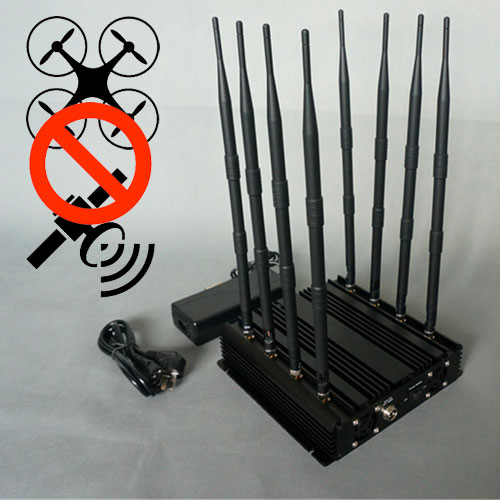Audio detection – drones emit a very specific sound. There are devices that can listen to the very specific frequencies of the whirring devices and work well up to a point. In a quiet, pastoral setting, these devices can detect an approaching drone with an accuracy of up to 500 feet. In a study conducted by Korean researchers and published in January 2017, these devices were tested in a real urban environment. When used in a noisy environment, audio detectors struggled to more accurately identify the incoming drones.
RF Technology – Drones use radio frequency to communicate with their operators. To keep the receiver and the transmission connected, they are paired with specific RFID chips that prevent other devices on the same frequency from overtaking the drone.
Jammers – Jammers emit electromagnetic noise using the radio frequencies that drones operate on and output information. In fact, they drown out the conversation between a drone and its operator. This is usually either 2.4 GHz or 5.8 GHz, which are unassigned public frequencies. This prevents jammers from interfering with manned aircraft, cell phones, public broadcasts, or other dedicated radio bands. drone signal jammer can be either stationary, mounted devices or built into highly mobile, gun-like devices that can result in a drone landing safely on the ground from where it may have intended.

Geofencing – Geofencing creates a barrier that surrounds airspace using a combination of a GPS network and Local Radio Frequency Identifier (LRFID) connections such as Bluetooth or Wi-Fi. This boundary is created using a combination of hardware and software to create a physical and invisible boundary that surrounds an airspace. Some drone manufacturers incorporate geofencing technology into their aircraft to warn pilots when they enter no-fly zones or restricted airspaces such as prisons, power plants, or airfields.
Video Detection – Video can be used in conjunction with other drone detection technologies to create and relay a visual record of a detected drone incident. Due to factors like weather or changes in season, video detection is not an ideal first line of defense in detecting incoming drones, but it can be a valuable tool for recording drone incidents for future reviews.
Thermal Detection – Thermal imaging is also not a good first line of defense when it comes to detecting drones, but it can be a helpful tool for locating drone operators in a remote area. For example in the smallest of spaces such as the area around a power plant. When a drone is detected in the air, thermal cameras attached to a drone operated by the power plant’s security staff can be used to locate the nearby operator of the intruding drone.
Radar Detection – Drones are often small, low-flying aircraft, making them very difficult to pick up on radar. Radar technology is ideal for finding manned large or long-haul aircraft flying in conventional airspaces. However, their skills are incapable of detecting drones well. When a drone crashed on the White House lawn in 2015, intelligence officials could only see it by sight as it was flying under the existing radar protection.